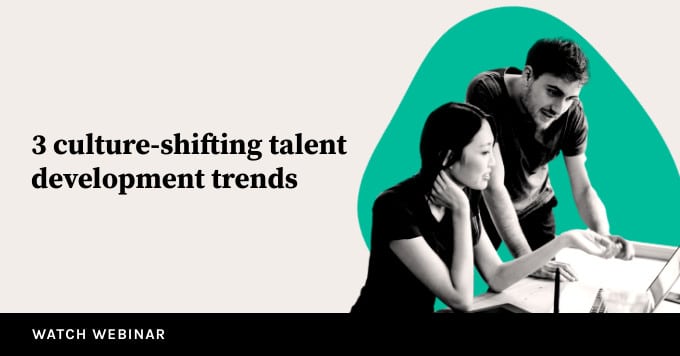How do you describe yourself when you’re presented to someone new? Many of us describe ourselves by what we do and who we are at work, including what type of leader we are. When faced with change and complexity, this can throw us, and our identity, off-kilter. Instead, learn about how to use leadership identity change to adapt and stay more balanced.
Why Leadership Identity?
Who are you when you face customers? What style do you use for managing direct reports? How do you interact with your board members? Answering those questions give you a clue as to what attributes and behaviors you use in different situations.
The more leaders can adapt and access different skillsets according to a situation, the better they can navigate uncertainty. As this paper describes, when faced with complex crises, situational leaders can more easily take into account all the different variables. They can then better balance the needs of the individuals with those of the business. Leadership identity change is an important part of this as leaders respond to shifting relational dynamics.
On the other hand, attaching yourself too strongly to, for example, being a charismatic leader could mean that you miss other people’s needs because you’re too focused on your own. Even a transformational leader might not be the best in a crisis because they need time to build consensus.
What other benefits can you expect from a flexible approach to leadership identity change?
- Organisational effectiveness – rather than going back to old habits during crises, leaders who can shift identities are better able to tap into their compassion, decisiveness and empowerment because they aren’t agonizing over how this crisis is impacting them personally. So, the pacesetter becomes the influencer, for instance.
- Leadership maturity – understanding identity as a concept allows leaders to shift from being overly focused on personal interests and wanting to be the superstar to searching for meaning and how to support the greater good. Examples include Bill Gates and his humanitarian causes or Nelson Mandela, among others.
Transitions and Leadership Identity Change
Interestingly, Western cultures tend to hold on tightly to the concept of self-identity as a fixed thing. Neuroscientists are even trying to pinpoint which part of our brain is connected to our self or consciousness. As this paper explains though, Eastern cultures have a different view so perhaps there is no one single area in our brain?
Depending on which Western psychologist you follow, our identity is essentially an amalgamation of our thoughts and behaviors based on influences and experiences. On the other hand, the Eastern view, simply stated, is that our identity depends on context. With that in mind, adapting to crises and challenges becomes much more fluid for a successful leadership identity change.
Transitions are a part of life, based on our age but also life events. Joining a new company involves working out how you fit in. Being a leader is a constant interplay between what you understand of your current reality with what you don’t know. Timing is also critical and many fall into the trap of following survival mode during crises and miss out on opportunities for the future.
So, rather than getting stuck, consider the following for your own leadership identity change:
- Inner identity – how well do you know your values, assumptions, beliefs and motivations? Mindfulness is often quoted as the technique to use and as this research shows, you become less caught up in your story and more in-tune to the ‘we’ of leadership.
- Realigning goals and personal traits – it’s important to explore how your current traits might be holding you back from embracing the new dynamic around you. Often done with a coach, you define old behaviors that no longer serve you and new ones to develop.
- Questioning beliefs and assumptions – many of these lie deep in our subconsciousness but show themselves in reactions to events. Learning to identify these through feedback or coaching allows us to amend them or rephrase them so we can respond more wisely.
How Can you Learn to Adapt?
As we develop and mature as adults, we build on our experiences and gradually shift how we view both ourselves and the world. Of course, self-awareness in leadership development is a big part of that. Nevertheless, this only focuses on the personal and the relational but it doesn’t tend to include the collective.
More mature leaders not only know themselves with high emotional intelligence but they know how they impact the wider community. Their identity becomes simply a tool to navigate situations for the good of the company, the community and those around them. Moreover, by being less strongly attached to their identity and idea of self, they are more resilient. Essentially, they’re quite happy to use leadership identity change as needed.
Understanding how you make sense of your identity and the world around you is a lifelong process. Self-reflection is an important tool to guide you and the following questions are a good start. The aim is to discover your assumptions about other people and the systems you operate in. With that, you can decide which behaviors to shift, to let go or to take on.
- What differing perspectives can you see in people around you and can you find a common point to align them?
- How many causes and effects can you see around you when making a decision?
- Which mindsets and traits are helpful for your future and which are unhelpful?
What Does Your Leadership Identity Change Look Like?
We all know that interpersonal skills and emotional intelligence, along with self-awareness are critical for leaders today. Alongside these, understanding how your behaviors, traits and beliefs impact the world around you can allow you to adjust accordingly. You’ll become more nimble with your leadership identity change and better able to balance your competing requirements. You’ll feel less overwhelmed and you’ll be a stronger leader and motivator overall.
Anne Duvaux is a neuroscience leadership coach who was previously HR director focusing on Leadership & Development as well as coaching. In a past lifetime she was a chartered engineer and is also multilingual having lived in 9 countries and 13 cities. As an Associate Certified Coach with the ICF and more than 20 years’ experience setting up, partnering and leading teams across Europe and Asia in both corporates and early-stage companies, Anne understands how to navigate the challenges of leadership. Today, she brings a mindfulness angle to provide a balanced approach to life’s hurdles.


